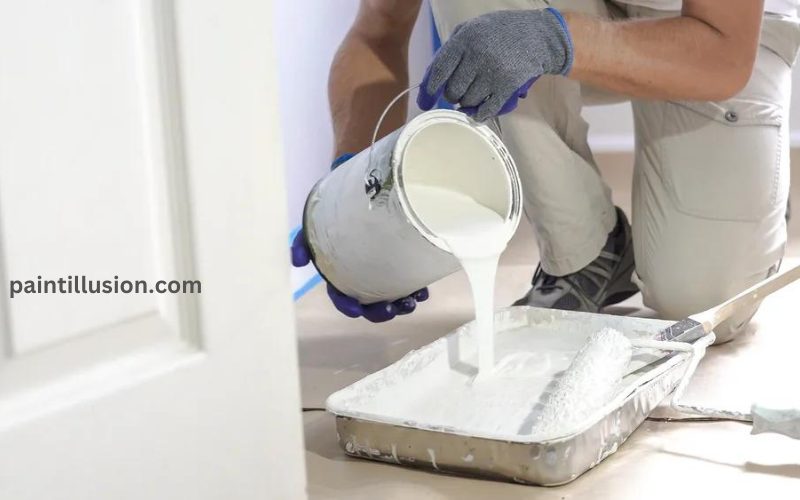When embarking on a painting project, it’s essential to consider various factors, including the weight of the paint you’ll be using. Understanding the weight of paint is crucial for proper handling, transportation, and even for calculating the amount of paint needed for a project. In this article, we will delve into the fascinating world of paint weight, exploring the factors that influence it, how to calculate it, and some tips for handling and transporting paint effectively.
Factors that influence the weight of paint
The weight of paint can vary depending on several factors. One of the primary factors is the type of paint being used. Different types of paint, such as latex, oil-based, or acrylic, have varying densities, which directly affects their weight. Additionally, the ratio of solids to solvent in the paint also plays a role in determining its weight. Paint with a higher concentration of solids will generally be heavier.
Another factor that influences paint weight is the color pigment used. Certain pigments are denser than others, resulting in variations in the weight of the paint. For example, paints with darker pigments tend to be heavier than those with lighter pigments. Furthermore, the volume of air trapped in the paint can also impact its weight. Paint that has been mixed or stirred vigorously may contain more air bubbles, making it lighter.
Understanding the density of paint
To comprehend the weight of paint, it’s essential to understand the concept of density. Density refers to how much mass is packed into a given volume. In the case of paint, density is typically measured in pounds per gallon (lbs/gal) or grams per milliliter (g/ml). The density of paint can vary depending on its composition, with different types of paint having different densities.
To calculate the density of paint, you divide its weight by its volume. For example, if a gallon of paint weighs 10 pounds, its density would be 10 lbs/gal. Understanding the density of paint is crucial for accurately estimating the weight of a specific volume of paint, such as 5 gallons.

How to calculate the weight of paint
Calculating the weight of paint is a straightforward process once you know the density. To calculate the weight of a specific volume of paint, you multiply the volume by its density. For example, if the density of a paint is 8 lbs/gal, and you have 5 gallons of paint, the weight would be 40 pounds (8 lbs/gal * 5 gal).
To determine the weight of paint in a different unit, such as kilograms, you can convert the density to the desired unit and perform the calculation accordingly. It’s important to note that when purchasing paint, the weight of the container should be considered as well to ensure accurate calculations.
Common types of paint and their average weights
Different types of paint have varying densities, resulting in different weights. Here are some common types of paint and their average weights:
- Latex paint: Latex paint is one of the most widely used types of paint due to its versatility and ease of use. On average, latex paint weighs around 10 pounds per gallon (lbs/gal) or 1.2 kilograms per liter (kg/L).
- Oil-based paint: Oil-based paint is known for its durability and smooth finish. It tends to be heavier than latex paint, with an average weight of around 12 pounds per gallon (lbs/gal) or 1.4 kilograms per liter (kg/L).
- Acrylic paint: Acrylic paint is popular among artists and crafters for its vibrant colors and quick drying time. It is generally lighter than both latex and oil-based paints, with an average weight of around 8 pounds per gallon (lbs/gal) or 0.96 kilograms per liter (kg/L).
Different measurements for paint weight
While gallons are commonly used to measure paint volume, weight can be measured in different units depending on the region or preference. Here are some alternative measurements for paint weight:
- Pounds (lbs): Many paint manufacturers provide the weight of their products in pounds. This measurement is widely used in the United States and some other countries.
- Kilograms (kg): In countries that utilize the metric system, paint weight is often measured in kilograms. This measurement is more commonly used in Europe and many other parts of the world.
- Liters (L): While liters are primarily used to measure liquid volume, they can also be used to indicate the weight of paint. This measurement is more common in scientific or chemical contexts.
Tips for handling and transporting paint
Handling and transporting paint properly is essential to ensure its integrity and prevent accidents. Here are some tips to consider:
- Secure the lids: Make sure the lids of paint containers are tightly secured to prevent leakage or spills during transportation. Consider using plastic wrap or sealant tape for added security.
- Protect the containers: Place paint containers in sturdy and leak-proof bags or boxes to protect them from damage. This is particularly important when transporting paint in a vehicle, as sudden movements or impacts can cause spills.
- Store paint upright: When not in use, store paint containers upright to prevent settling or leakage. This will help maintain the proper consistency and prevent excessive weight shifting during transportation.
FAQs about paint weight
- Q: Can I estimate the weight of paint without knowing its density? A: While it is possible to estimate the weight of paint based on averages for specific types, knowing the density will provide a more accurate calculation.
- Q: Does the weight of paint affect its coverage? A: The weight of paint does not directly affect its coverage. Coverage is determined by the paint’s viscosity and the type of surface being painted.
- Q: Are there any safety concerns related to the weight of paint? A: The weight of paint itself is not a safety concern. However, handling heavy paint containers improperly can lead to injuries. Always follow proper lifting techniques and use appropriate equipment when handling heavy paint containers.
Conclusion
Understanding the weight of paint is vital for various aspects of a painting project. Factors such as the type of paint, color pigment, and air content can influence the weight of paint. By calculating the density of paint and using the appropriate formula, you can determine the weight of a specific volume of paint accurately. Handling and transporting paint safely is also crucial, ensuring that the containers are sealed tightly and adequately protected. By considering these factors and implementing the tips provided, you can confidently navigate the world of paint weight and successfully complete your painting projects.

